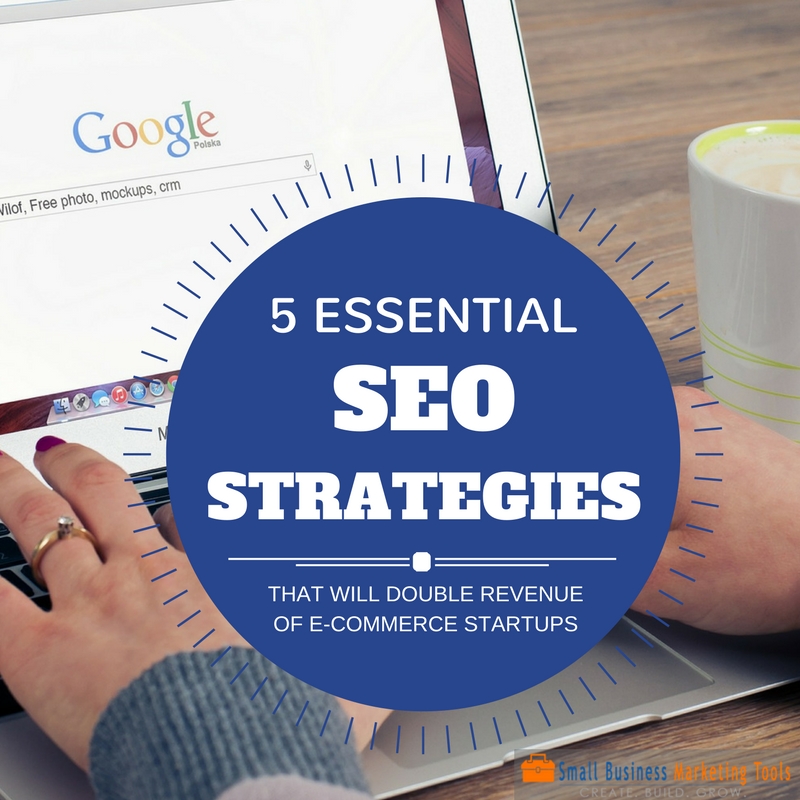
 Most effective website SEO tips that improve organic search results for businesses to be competitive online
Most effective website SEO tips that improve organic search results for businesses to be competitive online
With the advent of internet outreach throughout the world, e-commerce websites have emerged as hotbeds for online shopping opted by more and more people these days. On the face of it, managing e-commerce websites is apparently difficult and strenuous exercise. After all, it takes time, efforts, and skills to generate revenues for any business let alone e-commerce startups.
Today, however, options are also available for these startups to effectively manage their businesses. What they truly require is effective information architecture, search engine optimization, and efficient marketing strategies to make a big difference in the end. These powerful SEO techniques are capable of generating tremendous amount of revenues for e-commerce websites by attracting more and more organic search traffic to their websites.
As a matter of fact, the success for e-commerce businesses is not that much dependent upon innovation than utilizing factors that impact search marketing efforts. Perfecting these essentials, therefore, is the key to get a significant competitive advantage for e-commerce startups.
Here are 5 most effective SEO tips that will double the revenues of your e-commerce startup:
1. Maintain effective information architecture and website structure
The first thing you should focus on is to differentiate between your website structure and the organizational structure of your business. A simple site structure that is easy for customers to navigate for finding required products should be your top priority. In other words, your website should essentially focus on the needs of your customers.
The search data generated from search engines such as Google can help you immensely to understand what users need. It is important for users to know queries related to your business and after identifying them, try to answer them clearly to offer your targeted audience a great assistance.
To start with, an easy navigation menu separately includes: the home page, department pages, and product pages. To make the architecture of your website more user-centric, you can use extensions and plugins during development process.
2. Use search and analytics data for e-commerce SEO
It is well established fact now that most successful e-commerce businesses are the ones that inform their customers what exactly they need and are looking for. It takes thorough research about your customers, their journeys, their purchasing patterns, and their online behaviors.
This is where analytics come into play. The tools like Google Analytics and SEMrush provide you significant data and information about your customers. These also help you formulate customer-centric SEO and content strategy. Using these analytics tools further allows you to combine search data with sales figures and conversion rate.
3. Switch to HTTPS to increase SEO ranking
The predominant reason and benefit behind shifting your entire online business domain from HTTP to HTTPS is security. The truth is entire e-commerce business runs on the very premise that users have to fill out several forms so that their personal information will be processed before selling and purchasing takes place. It is therefore pertinent that their personal information and the related data should be kept secure and encrypted.
In addition, Google has started giving a slight preference to websites that are HTTPS. Do not forget to update your canonical tags while switching from HTTP to HTTPS because un-updated URLs can create issues like spider blocks, duplicate content, and decreased keyword relevancy.
4. Make your e-commerce website mobile responsive
E-commerce business simply needs physical as well as digital presence alike. According to a study, customers tend to interact with the websites that have strong mobile presence.
Customers are increasingly expecting to shop any time they like and they are using smart phones as a significant means of internet access – highlighted the study report. Recently, Amazon reported that 70% of its customers bought their items through a mobile device.
All these data suggest that e-commerce businesses have to widen their adaptability and improve user experiences across all platforms. There is no denying fact that mobile devices have grown significantly in use and popularity. In addition to that newer apps are tempting buyers with features such as one-click purchases.
5. Optimize product pictures and videos
It is very important to understand that the quality of your products’ pictures and videos is going to have a profound influence on visitors. The potential customers who get to see poor quality pictures, photos, and videos will never make any purchase. Using this approach also underlines the value of making potential buyers feel the value of your product.
Relevant pictures of various products in e-commerce sites are often shared on different social network platforms like Facebook, Pinterest, and YouTube. It helps your brand to grow even further with the spread of words of mouth. Moreover, the optimized images of your products can help you in a great way to pull in more traffic from Google image search.
Final thoughts
E-commerce business is a rapidly growing phenomenon, which is increasingly demanding sure-fire techniques and strategies to pull more and more traffic towards websites. On a daily basis thousands of startups are trying their luck with new and innovative ideas. However, failing on a few essential SEO strategies is also costing them dearly. The above mentioned strategies, therefore, are a shot in the arm for these e-commerce startups that will surely double their revenue.
Editorial Staff
Latest posts by Editorial Staff (see all)
- Adapting Regulatory Frameworks to the Challenges of Financial Industry in the Digital Era - March 19, 2024
- How to Sell Company Merch Online With Print on Demand - March 11, 2024
- Unlocking Easy Ways To Start A Successful Fitness Brand - February 15, 2024
- The Impact of Digital Transformation on Traditional Business Models - November 8, 2023
- Personal Trainer Marketing Strategies And Tips - November 6, 2023
